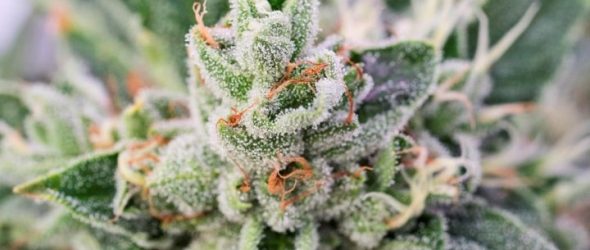A planting machine crawled along the 100-acre Good Farm in Brant County, Ont. on a sunny June day, dropping seeds into the soil in the middle of the COVID-19 pandemic.
Behind the wheel was an employee of 48North Cannabis Corp. one wouldn’t usually expect: chief executive Charles Vennat.
“I joked with my team that I was the most expensive farmhand in southwestern Ontario,” said Vennat, who professes to keeping a pair of hiking boots in his car trunk for such impromptu jaunts.
“I’ve always had the leadership philosophy that you should never ask anybody to do a job in your company that you would not want to do yourself.”
Vennat, who visits the farm once a week during warm months, was at work on his company’s second crop of outdoor cannabis — a fairly new venture for licensed cannabis producers.
While many pot producers started out with massive indoor facilities to prepare for the legalization of cannabis in Canada, a handful have turned to outdoor cultivation in order to take advantage of savings from free sunlight and lower electricity and staffing costs.
Health Canada began handing out licenses to cultivate cannabis outside in 2019. Interest has since grown steadily.

Health Canada told The Canadian Press there were 391 cannabis license holders as of May 31. About 56 are authorized for outdoor cultivation, up from 28 last December.
As of March 2020, licence holders had dedicated more than 2.7 million square metres of land to outdoor growing and about 1.9 million square metres for indoor cultivation.
Most say savings make outdoor cultivation attractive. A 48North spokesperson said some studies show cannabis grown indoors can cost $2 per gram to cultivate.
“We cultivated 12,000 kilos last year at 25 cents a gram, which is obviously disruptive,” said Vennat.
“We’re quite bullish on the fact that we will do it again this year with even better quality and a lower cost per gram.”
While Vennat boasts about the price, he admits that the company didn’t harvest as much as it hoped and didn’t have the right licensed drying spaces.
“Some went just extremely large scale where other producers started with a more slow and steady approach and I think are scaling up moving into this season,” said Robyn Rabinovich, a senior account director at Hill and Knowlton Strategies, who has worked for CannTrust Holdings Inc. and TerrAscend.
While many companies were instantly interested in outdoor cultivation, several licensed cannabis producers fought it because they had already invested in large-scale greenhouses, she said.

They eventually came around on the idea, which many experts believe could become even more popular because of the cost savings and how easy it is to physically distance on outdoor farms compared to indoor facilities.
Those benefits aren’t lost on Canopy Growth Corp.
It first got into the outside growing game last year with a test crop in Saskatchewan, but is back at it again this year. It hopes to use its crop on edibles, cannabis beverages and vaporizer pens.
“Your electricity bill is practically nothing when you grow with the sun,” said Adam Greenblatt, a senior communications adviser with the Smiths Falls, Ont. company.
Read more:
Cannabis NB CEO expects Crown corporation to be profitable this year as potential sale looms
“When you consider indoor growing, you’re talking about easily 1,000-watt lamps for every 20 square feet or so and rooms with 100,000 watts of lights, burning 12 to 18 hours a day. It’s incomparable.”
Outdoor cannabis farming also allows for a drop in labour costs. Greenblatt estimates a dozen workers tend to Canopy’s Saskatchewan cannabis farm, in comparison to its headquarters, where roughly 1,000 people work.
Canopy’s indoor growing team is much larger because it involves more labour intensive work such as trimming the flowers and maintaining and operating fertilizer tanks and high-powered lighting.
Outside growers can often do their harvesting completely mechanically because the cannabis is being grown to become ingredients for pot products.

Even with its benefits, outdoor cannabis farming isn’t always a smooth venture, said Andrew Condin, the chief executive at Saskatchewan-based Bold Growth Inc.
He’s always paying close attention to Mother Nature because hail or high winds can wreak havoc on his cannabis crop.
Condin wanted to plant 15 acres of outdoor cannabis this year, but COVID-19 has disrupted that plan.
Pandemic-friendly policies have meant Bold’s indoor growing operations has to split its workers into two groups and can’t spare enough to tend to a full farm doing outdoor cultivation.
“We basically divided our teams and had no crossover so we didn’t have COVID coming through the facility and transmitting through our workforce, but it’s been difficult to manage that and to keep that level of protection on our team members,” Condin said.
When COVID-19 is over or at least subsides, he envisions all 15 acres growing and predicts, “You will see an increase in outdoor cultivation.”
© 2020 The Canadian Press




